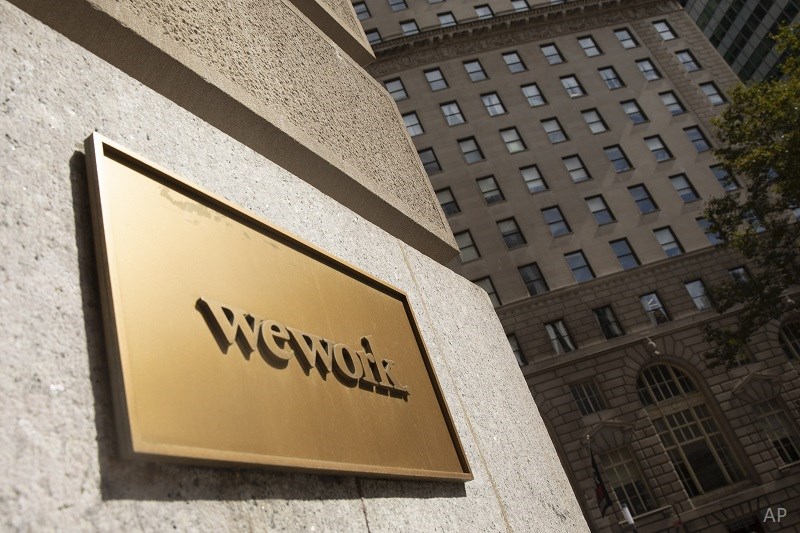
A classic crypto crash. The Valeant hype-train. The Nortel nightmare. The Washington Mutual ‘bargain’. The 2008 debacle.
The memories send chills running down the spines of most investors. The rising panic as stocks fall, the desperate rush to sell, no value to be found anywhere. These are the stories that Bay Street and Wall Street whisper in the dead of night. Stories so grim, so full of fear, that many try to banish them from their minds.
For this Halloween, we asked some foremost financiers and voices of reason to dig deep into the depths of despair, to find their worst investment horror stories, and relive them here, on these pages, and share the lessons they learned, to help you, retail investors, steer clear of these pitfalls and bypass the descent into the madness of financial disaster.
Gather round and hark these tales of terror so that you may tread carefully:
Let the right Crypto in
by Andrew Willis, Content Editor, Morningstar
In the run up to the bitcoin peak of December 2017, I had noticed a trend of companies adding the word ‘blockchain’ to their name, with massive gains following. Many may remember Long Island Iced Tea Corp’s (LTEA) transformation to “Long Blockchain Corp.” (LBCC) and the same-day 200% surge in stock price that followed (and the de-listing, SEC and FBI investigations that also followed). I felt something was gimmicky about the blockchain-name-change thing but thought I could be clever and profit from a few-hour lead and sell before the hype dwindled.
I set up my media scanner and some Google Alerts and sure enough I got a press release that renewable energy provider Transeastern Power Trust (TEP.UN) would be changing its name to “Blockchain Power Corp” (BPWR) and had secured a $40m private placement. I noticed that it had already doubled in the weeks before that announcement, but I went ahead and made a (thankfully small) bet around $0.55/share. Turns out those gains before the announcement were pretty much the only gains to be had. The stock did rise to around $0.65, but I made the critical error of losing sight of my strategy after looking into their business model. Unlike the iced tea company, this company had a healthy dividend and a plan to mine bitcoin with the low cost of the energy they produced themselves with their own wind farms. I thought that even if the bitcoin bubble burst, they would still have a decent business in background. Well, the bubble did burst, and what followed was a decline to around $0.13 today.
What I learned:
I managed to maintain the discipline to avoid panic selling when the stock touched $0.06 earlier this year, which was a good learning experience. Ironically, the name of the stock served itself as an important reminder to take hype with a grain of salt, as it sat near the top of my alphabetized portfolio and would be the first thing I saw every time I looked at it. Earlier this month, the company made an announcement it was making yet another name change, this time to Jade Power Trust (JPWR.UN). I don’t understand the choice of name, but I guess the investment gods have decided that I no longer need the immediate shaming every time I look at my holdings.
The Haunted House
by Dan Kemp, Morningstar Investment Management Europe
While I have made countless investing mistakes, in most cases the impact has been fairly minor as I have primarily missed out on gains rather than experienced losses. The most significant of these is that I didn't get around to buying a property until recently and so am now facing a large mortgage on a property I could have bought 15 years ago at a much lower price.
What I learned:
While there are many reasons why I didn't buy a property earlier, this experience has reminded me that long-term investors benefit from being optimists rather than pessimists. However, this does not negate the importance of always focusing on valuation and demanding a margin of safety.
The Valeant Massacre
by Greg Taylor, Chief Investment Officer, Purpose Investments
Investing in growth companies in Canada can be terrifying in itself. There aren’t many of them and when one catches global investor attention, these stocks can move very far and very fast. But when it turns, look out below. Valeant (now Bausch Health (BHC)) briefly became the largest company in Canada in 2015 as the healthcare roll-up theme caught on. It ended up being more financial engineering than real growth, but investors couldn’t get enough of it. It dominated the performance of the then resource-focused TSX and the question amongst PMs was “did you own it or not?” If not, you underperformed. And then it all ended for the roll-up stories and everyone hit the sell button. The stock fell from more than $300 to under $50 and no one wanted to admit they even knew the ticker. In the end, the company had a complete metamorphosis, changing everything right down to the name. It’s still around, but nowhere near as dominant as it once was.
What I learned:
Don’t get caught up with the masses. Markets consistently do what make the most people wrong and one of my biggest fears is being too close to then consensus. Being a contrarian hasn’t worked as well in the past few years, but it is an important skill to have and something to keep in mind when investing. Once the consensus trends begin to change, if you aren’t early you will be forced to sell at the same time as everyone else when there are no bids.
Paranormal Activity: Sears Edition
by Adam Fleck, Regional Director of Equity Research, Morningstar Australasia
I bought shares in Sears (SHLDQ) in July 2007 at a price of about US$153. I thought I was getting a good deal -- the company was trading at a low price/sales ratio, and domestic comparable sales, while still declining, were showing signs of getting less bad -- down about 4% in fiscal 2006 versus 5% the year prior and 11% in 2004. My investment hinged on the strategy that Eddie Lampert had formulated in merging Kmart and Sears in 2005, which I thought held promise for potential scale-based cost advantages. With the stock falling from a high of US$190 a few months before my purchase, I believed there was a margin of safety to capitalize on this long-term opportunity.
I realized my mistake less than a year later. By May 2008, the share price had fallen to below US$100, and I began to re-test my thesis. The ongoing economic slowdown certainly didn't help matters, but I also became increasingly concerned that Sears would be unable to compete over the longer term with the likes of larger, better-run retailers as well as emerging pure-play online sellers. After a few weeks of work, I sold my shares in late May 2008 for about US$87, good for a loss of nearly 45%. But I'm glad I did -- shares suffered through 2009 as the Great Recession took hold, and while the stock bounced back in 2010 to briefly get above $120 again, we all know now where the story eventually ended.
What I learned:
The main lesson I learned is that management alone isn't a source of an economic moat. Despite what I thought was a solid strategy, built by very intelligent hedge fund manager Eddie Lampert, Sears's problems were larger, more structural and longer-lasting than any one owner or executive could have dealt with. Instead, I decided in early 2009 to purchase stocks in a number of companies we rate as having an economic moat, including Berkshire Hathaway (BRK.B), Walmart (WMT), Caterpillar (CAT) and Automatic Data Processing (ADP).
The Taxorcist
by Michael Dorfman, Portfolio Manager & Investment Advisor, BMO Private Wealth
The scariest lesson learned in my 30+ year career happened to a client. He owned a big position in Bell Canada (BCE) in the ‘80’s, which spun off shares in Nortel, the digital technology company. Nortel began a meteoric climb during the great tech/internet bubble of the late 90’s. In July 2000, Nortel shares hit a peak of C$124.50, providing my client a market value of $500,000 with a cost basis of only $25,000. I practically begged him to allow me to sell some shares to reduce the concentration risk. He argued this would cause too much capital gains tax.
What I learned:
I lost that battle, and he finally sold after the shares had sunk precipitously prior to eventual bankruptcy. The moral of this scary tale is to not avoid taking a profit due to concerns about paying tax. This client ironically ended up not having to worry about capital gains at all!
The Washington Mutual Project
by Syl Flood, Chief Content Strategist, Morningstar
I’ve been a stock investor since the mid-1990s. I survived the .COM bust by not having a significant amount of my personal assets in stocks at that time, and continued investing in stocks through the 2000s.
As the financial crisis was simmering in 2006 and 2007, some financial services companies began to look like bargains as fundamentals began to deteriorate. One that looked really cheap was Washington Mutual. I was heartened by the fact that several value-oriented US mutual-fund portfolio managers that I respected owned a significant amount of the name. I used only Morningstar research to make the decision to buy.
Its peak market cap had been $40 billion. Part of my thought process in buying the stock had been: when things return to normal, its market cap will, too.
Needless to say, the investment didn’t pan out. The US FDIC took over Washington Mutual on September 25, 2008, and JPMorgan (JPM) bought it for $1.9 billion. I lost most of my money.
What I learned:
Don’t base a decision on only one research view. These days, I still use Morningstar research, but I get second opinions from a large national-broker dealer’s research. Corollary: Resist the urge to buy or sell compulsively. Wait a day, at least, for the mental dust to settle.
Dig deeper into why a company has gotten to where it is. I didn’t perform enough due diligence about the reasons for Washington Mutual’s success. Washington Mutual’s strong California franchise funded their expansion to other markets just as the housing market in California was teetering, and then cratering. Washington Mutual was doubling down on its strategy in the face of impending disaster. I thought they were brave, but instead they, like I, was foolhardy.
Internalize the concept of real risk. Risk is not standard deviation. Risk is the permanent loss of capital. I didn’t believe it until I experienced it.
Bargains are bargains for a reason. The market is great as a voting machine. Respect it.
Take your lumps. I held onto Washington Mutual stocks even as the warning signs piled up in the hope that the stock price would recover. The market doesn’t care about my getting back to break-even. Admit a mistake, take the loss, and move on.
Since 2008 I’ve separated my stock investments into short-term and long-term buckets. I will occasionally hold stocks for less than a year, and have owned some for several years. I am grateful that the Washington Mutual nightmare didn’t dissuade me from investing thereafter, and for the expensive lessons that I learned in the process.
The Nightmare on Wall Street
by Peter Bull, Head of Equities, Morningstar Investment Management Australia
Around December 2007, a lot of the big Wall Street firms were trading very cheaply relative to where they had been over the preceding years and even during the run up in 2000. I was living in the United States focusing on non-U.S. stocks for work, and I listened to some very well respected and famous investors recommending these firms as being incredibly cheap. And so, I invested in my personal accounts in some of them. It wasn't more than I could afford to lose, but of course it doesn't feel that way when you only recover 50% of your investment. Watching statements come through the mail with new and strange-looking stock identifiers for companies that have gone bankrupt is an experience I'll never forget. I didn't even know how to get rid of them.
What I learned:
There were several important lessons, of course, like always do your own research and don't listen to pundits or stock stories. The best stock story is a list of everything that can go wrong that turns out to be quite boring.
The most important consideration I think is that when you look at companies to invest in, your mental checklist should include thinking about the business completely independent of its price. People get overly excited by price action because it's so accessible and easy to correlate with interesting stories in the news or exciting developments in the future. But looking at price in this way can be a terrible mental short-cut to take. Some businesses are robust to 90% of the bad things that can happen, while others are a complete coin-toss if they will even survive the next bad thing, whatever it is. It requires real thinking to get through it because it's not obvious in many cases. Appropriate position sizing is also key to surviving your mistakes -- and there will be mistakes.
A good and practical thought process is to really think of what your required return is for a given investment instead of jumping straight to what its recent price history is or what its short-term expected return is according to some model. Different investors can have different answers to the same questions about risk preferences and required returns and still be correct. They definitely don't need to let the market dictate what's fair compensation for risk. Ultimately, investors who want to build wealth slowly with stocks, or those who have more modest expectations of them, are in the end more likely to be successful with them. Consider the alternative -- we all know how "get rich quick" turns out.
The above stories are for illustrative purposes only. Investing in securities involves risk. Please work with your financial professional before making a financial decision.





















